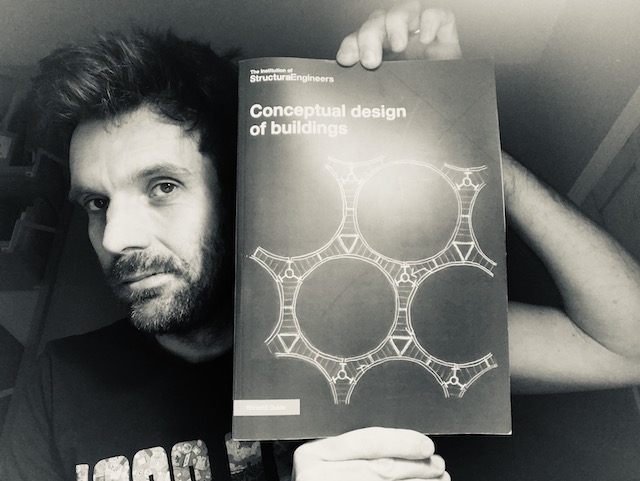For anyone attending one of my conceptual design training courses, the second question I ask is what is conceptual design*. In this post I’ll give the definition I use and why I find it helps trainees.
For me, conceptual design is:
- the phase of the design process that begins with a blank sheet of paper
- when the broad shape of the answer is defined.
- when you answer the big questions.
Conceptual design can be defined in contrast with detailed design, in which the full detail of the design, the components, the interrelationships are defined.
Let’s look at some of these defining features in more detail.
Starting with a blank sheet of paper
My blank-sheet-of-paper definition may sound luxuriant: who but the most senior of designers really gets to design from a blank sheet of paper? It may also sound applicable to only a few domains of design, for example one-off stand-alone artefacts rather than components of complex systems.
When I say blank sheet of paper, I mean when you are beginning your work as a designer. Whether you are genuinely at the start of a project in which little has been defined already, or you are designing a tiny component in a much bigger system, there will be a start to you work. And when you start that work, you can start with a blank sheet of paper.
At this starting point that you can define and start to explore the dominant requirements of the brief that will define the solution space. And at this point that you can start to see the range of options that might be applicable in this space.
When the broad shape of the answer is defined
The earlier you are in the design process, the easier it is to change your ideas. But once you start to flesh out those ideas, it rapidly becomes much more difficult for you to change course. I see lots of factors at play here.
There is the concept of cognitive ease, in which the brain finds it easier to think about something it already understands. I think cognitive ease makes it harder to develop ideas two, three and four once you have defined idea one.
I also think the concept of sunk-cost fallacy comes into play. Sunk-cost fallacy is the tendency to value more highly the amount invested in something already compared to the potential future costs it might incur. It is seen for example in government decisions to pursue infrastructure projects even when the long-term case is no-longer viable because of the cost already spent in developing the idea.
I see also another, more practical factor at play here too. It is in the concept design phase that the mechanisms of design are set up. For example, when design teams on building projects define where the gridlines should go, or when city master planners set out the geometry of the street grid. Agreement around these common reference points eases collaboration, and so changing these agreed points of reference can be very hard.
Conceptual design is when expectations, and therefore preferences about the answer are set.
When you answer the big questions
Design is creating something new. If it already exists, it isn’t design: it’s shopping (for more on this see my post on the Designer’s Paradox). I usually find that the overall shape of that new thing is defined by the answer to a few key questions.
For example, the overall shape of a city master plan might be defined by the answer to the question: how do we manage surface water. For a tall building, the key question is how do we manage lateral loads. For a song, it might be the rhyming structure or the chord progression.
The answer to these big questions has such a dominant effect on the solution space that, once they are set, it is very difficult to step outside these parameters. (Elsewhere in my notes I refer to these defining questions as the ‘key systems’).
The ox and cart metaphor for conceptual design
For a visual example, I like to invoke stoic philosopher Seneca’s metaphor of a walking prisoner chained by a long leash to travelling ox and cart. The designer is the prisoner. The ox and cart are the emergent design. Before the ox and cart set off, the prisoner can wander in any direction within the range of their chain. But once the ox sets off in a particular direction, it is very painful for the prisoner to try and change its course.

Conceptual Design of Buildings
For more of my writing on design and idea generation check out the Chapter 2 of Conceptual Design of Buildings, published by the IStructE.
Check out my set of posts on this blog on creative thinking tools for projects and browse the courses I am delivering with partner organisations at Constructivist.


Leave a Reply